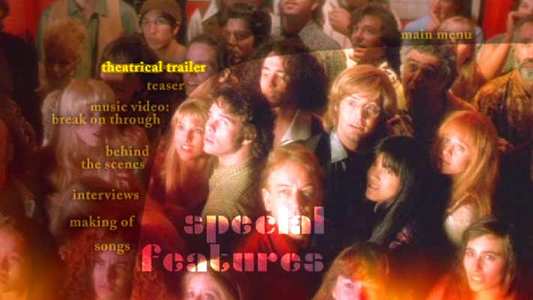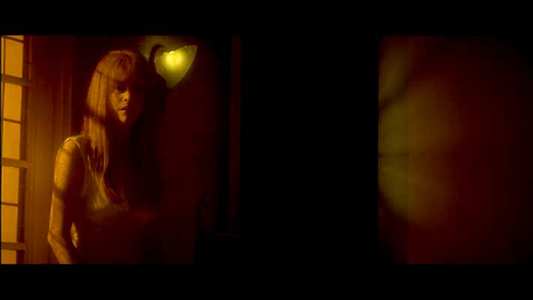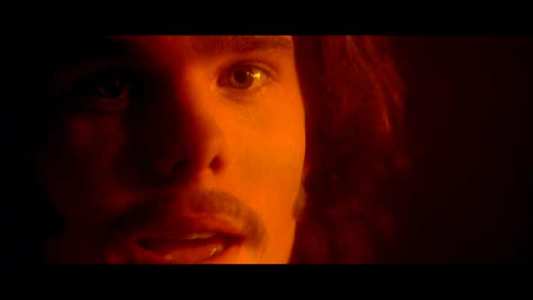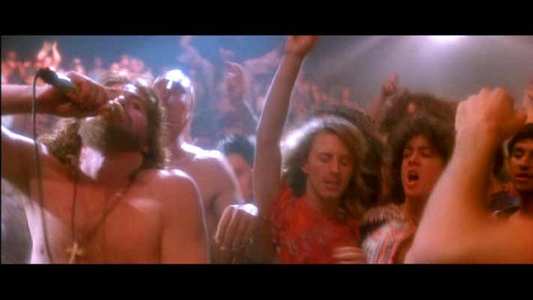Review of Doors, The Special Edition
Introduction
Take the caustic, nihilist poetry of Arthur Rimbaud, mix with the Dionysian myth-making philosophies of Nietzsche and a hell of a lot of mescaline, and you have Jim Morrison, the creative driving force of The Doors, according to Oliver Stone’s film of the same name. In an attempt to mix Morrison’s metaphysical ponderings with a cogent whistle-stop narrative, Stone mixes documentary realism with poetical imagery to create a bemusing spectacle of sorts: he tracks Morrison’s journey from idealistic wanderer, floundering through film school and into the arms of Pamela Courson (Meg Ryan) before creatively peaking with band mates Ray Manzarek (Kyle MacLachlan), Robby Krieger (Frank Whaley) and John Densmore (Kevin Dillon) as media-friendly retro-psychedelic rockers The Doors. As portrayed by Val Kilmer, Morrison becomes an enigmatic figure of profound insight and suffering, tormented by his own passions and misunderstood by a numbed populace. So, Jim Morrison: genius poet or pretentious egotist who just smoked too much peyote? The answers lie within…

Video
Some of the CG mattes designed to give the master shots an ethereal, transcendent quality look extremely dated. But cinematographer Bob Richardson’s use of Scope is exemplary and, despite one brief moment of extreme print damage (during the ‘Thanksgiving’ party) this is a pretty flawless transfer.

Audio
There’s always something interesting to listen to in an Oliver Stone film, and although The Door’s music unsurprisingly dominates the soundtrack, the 5.1 track offers plenty of audio work-out for your sound system, with especially well designed concert scenes.

Features
An Oliver Stone commentary is always good value, even here, where there seems to be a certain reluctance to discuss certain issues of the film’s reception (namely critical indifference and the furious response it received from Door’s keyboardist Ray Manzarek), but is typically endearing for its unapologetic discursive nature. Sadly, the other extras are terrible: dull as dishwater behind-the-scenes footage is slightly more watchable than the hopeless interviews, edited into incomprehensible two second subliminal glimpses. A PR fluff documentary, pointless music video, some trailers and a redundant music selection gimmick do little to stem the tide.
This disc pales in comparison to the 2-disc Artisan release available in Region 1, which features a wide variety of deleted scenes and a proper documentary. If you can play Region 1 discs, my advice would be to go for this one, as an added incentive, on some online retailers it is even cheaper than the Region 2 version.

Conclusion
On the surface, this is damn near flawless: Val Kilmer looks more like Morrison than Morrison himself, and he nails the singer’s feline physicality, impassioned glaze and convulsions of possessed serenity. It captures the music’s cryptic, erotic charge, both through superior ‘live’ concert footage and a quite excellent scene as the band create ‘Light My Fire’. Some things about this never cease to amaze: not least a convincing and uncompromising performance from the world’s most annoying actress (Meg Ryan); and for all its depth, this is one of Stone’s leanest, most flab-free endeavors, resourcefully sticking to Morrison’s doomed track through life. Thankfully, Stone has no truck with laying on disciple-like adoration on Morrison’s genius, and seeks instead to find the heart of his curious style (through a rather ineffectual complex of flashbacks and dream-sequences to a Freudian/Native American ideal.)
However well he sets the groundwork for Morrison’s unique talent, he never manages to penetrate the dark, dense interiority of his poetic mystery. The film is so eager to explore Morrison’s iconoclasm that it fails to shine a light in the dark places Stone seems so sure that Morrison’s talent was able to illuminate. It’s also not clear that Stone’s film manages to overcome the cock-rock cliches of the Band-film, as Stone so often resorts to conventional narrative devices, presumably so as to not alienate audiences from the film’s innate futility. The flip-side however, is even more fraught with difficulties: the film is most clearly unsuccessful, and more hysterically symbolic, when it consciously leaves the band-movie format and delves into uninteresting acid-trip pondering in the desert. Criticisms aside, this is still a riveting film, with fascinating central performances and the genuine feeling that one is scraping through the shamanistic occult-glam of Morrison’s reputation to something more real. It may lack the polemical force of Stone’s best work, but this is still absorbing stuff.
Your Opinions and Comments
Be the first to post a comment!